Molecular Assembly Group
Group Outline
We are conducting research and development on self-organization of molecules
and fine particles, photo-functional materials that change their physical properties (phase, optical
properties, surface properties, dynamic behavior, etc.) in response to external stimuli such as
light, materials that utilize or convert optical properties, and process technology (material
synthesis, patterning, adhesion) using light. Related fundamental technologies are also a subject of
our research and development.
Key Themes of Research
- Development of photoresponsive materials and optical functional materials, and its application to devices
- Development of optical up-conversion material technology and its application to device technology
- Development of molecular alignment control method using self-assembly and its expansion into new device process technology
- Development of soft materials with dynamic behavior and its application to device technology
- Development of synthesis techniques for functional fine particles and their optical and electronic material technologies
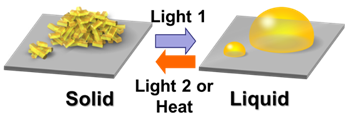
Organic materials that changes its phase between liquid and solid with light
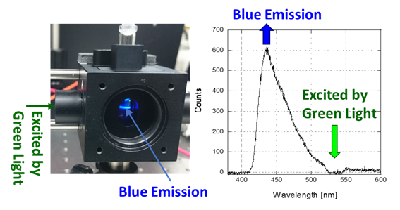
Wavelength conversion with photon upconversion material
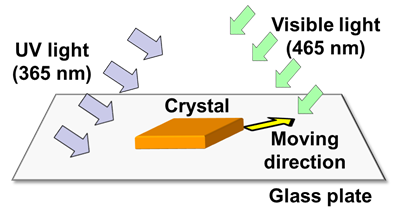
Phenomenon that crystal moves by light
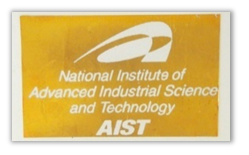
Processing technology by pulsed light firing method
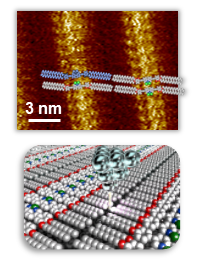
Development of molecular alignment control method
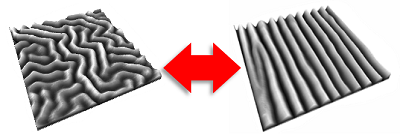
Material and friction technology using wrinkles
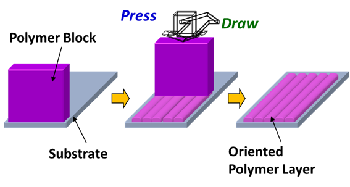
Thin film fabrication by friction transfer method
Our Technologies and Equipment
Organic / polymer synthesis, nano-particle fabrication, organic synthesis using flow-type microwave
heating
equipment, optical microscope, probe microscope (AFM, STM), evaluation of liquid crystal materials,
thin
film
fabrication technology (vacuum process, wet process, friction transfer method), thermal analysis
(DSC,
TG /
DTA), contact angle measurement by droplet method, white pulsed light irradiation device, molecular dynamics
simulation,
X-ray diffraction device (single crystal)

